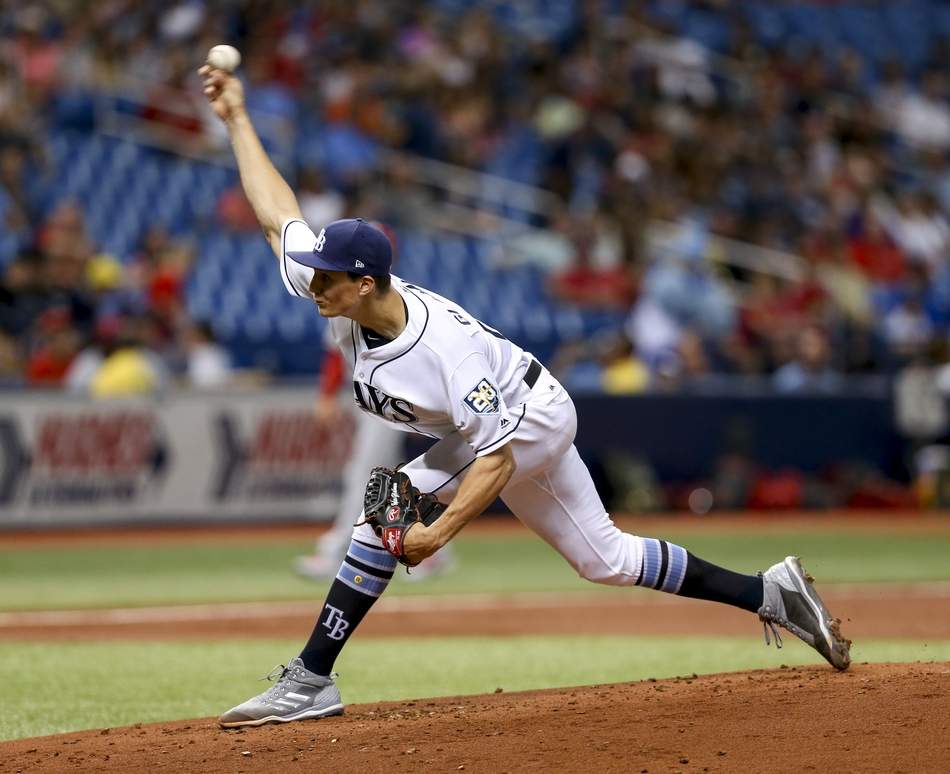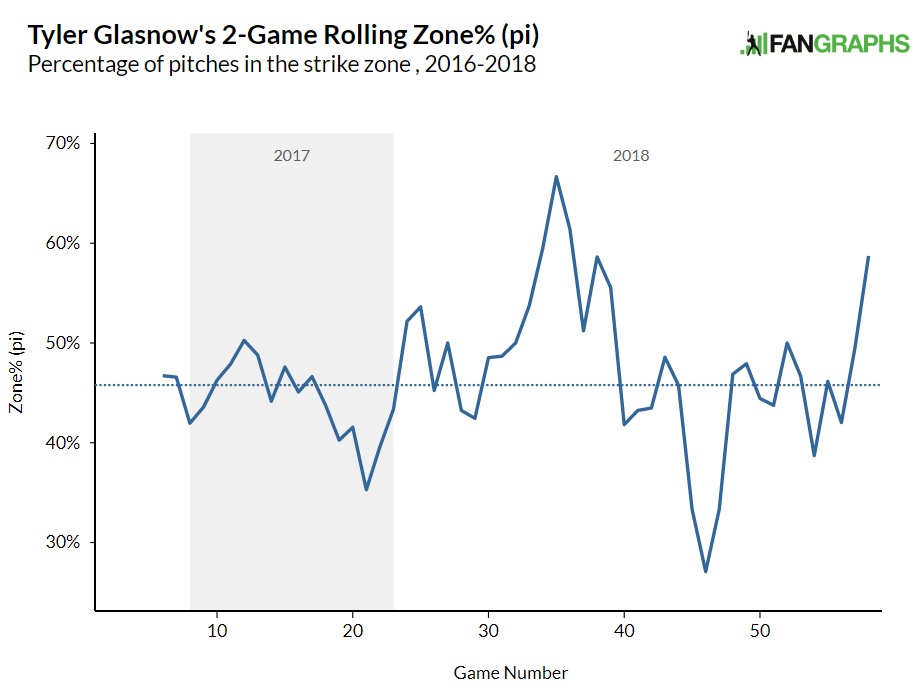Tyler Glasnow’s Figured Something Out

Yesterday, we ran a piece on the Rays post-deadline roster. It included the note that “Tyler Glasnow, who while still developing, has a dominant 11.6 K/9. Glasnow racked up 5 strikeouts in 3 innings in his Rays debut, flashing his electric fastball. He then backed that up with 9 K’s in 4 innings in his second start.” The young right-hander is a former top prospect, having earned a place among every major publication’s Top 50 for four straight years. He struggled to turn that pedigree into success in Pittsburgh and the Rays jumped at the opportunity to let Tyler Glasnow pitch, however raw he may still be as a pitcher.
The two things to know about Glasnow are about what you would expect from every young prospect struggling in the Majors. 1) He has great stuff. His fastball has touched 100 mph, and averages a tick under 97 mph. Meanwhile, his curveball has seen batters manage just a .202 average and .565 OPS against. 2) He’s struggled with the walks. His career major league walk rate is 5.6 walks per 9. That’s worse than any qualified pitcher this season.
Since changing his laundry to the more subtle Tampa hues, Glasnow has walked just one batter in his 7 innings. It’s a small sample, sure, but it represents a drastic shift in his Achilles heel and correlates nicely with the move to Tampa. The Rays must be doing something different.
First, let’s check to see how Glasnow’s new catcher ranks relative to his old catcher. Quantifying the value of framing pitches for the umpire is still a blossoming science with all signs pointing towards catcher framing is super valuable. Unfortunately, it does not appear that the Glasnow /Michael Perez story can be the poster child of the impact of catcher framing. You see, Michael Perez is a worse pitch framer than Glasnow’s old catchers (Francisco Cervelli and Elias Diaz).
But catchers only affect the pitches on the fringe of the zone. They’re not going to make the most left pitch of the year a strike, for example. But Glasnow has been throwing more strikes (nearly 70% strikes, as opposed to under 60% in his time in Pittsburgh this year). There are a few ways to get more strikes, the most straightforward of which is to simply throw it in the strikezone. Here’s Glasnow’s zone% on the year. Note the tick up at the end. That’s his two games in Tampa.
Yesterday, the great Jeff Sullivan made the case that he’s throwing his fastball more for strikes. He appears to be throwing his curveball for strikes more often, as well. He’s thrown just 20% of the curveballs for a ball (as compared with 33% prior to the move). It’s a small sample, sure, but it’s something.
The Chris Archer trade is not destined to be judged by the success of Tyler Glasnow to throw strikes. The Rays collected another high-end talent, in the form of outfielder Austin Meadows, in the deal as well. But if the Rays are going to be competitive, to truly compete with the Yankees and Red Sox, it’s probably a good idea for their most talented right-handed pitcher to fill up the zone. So far, he is.
-Sean Morash













